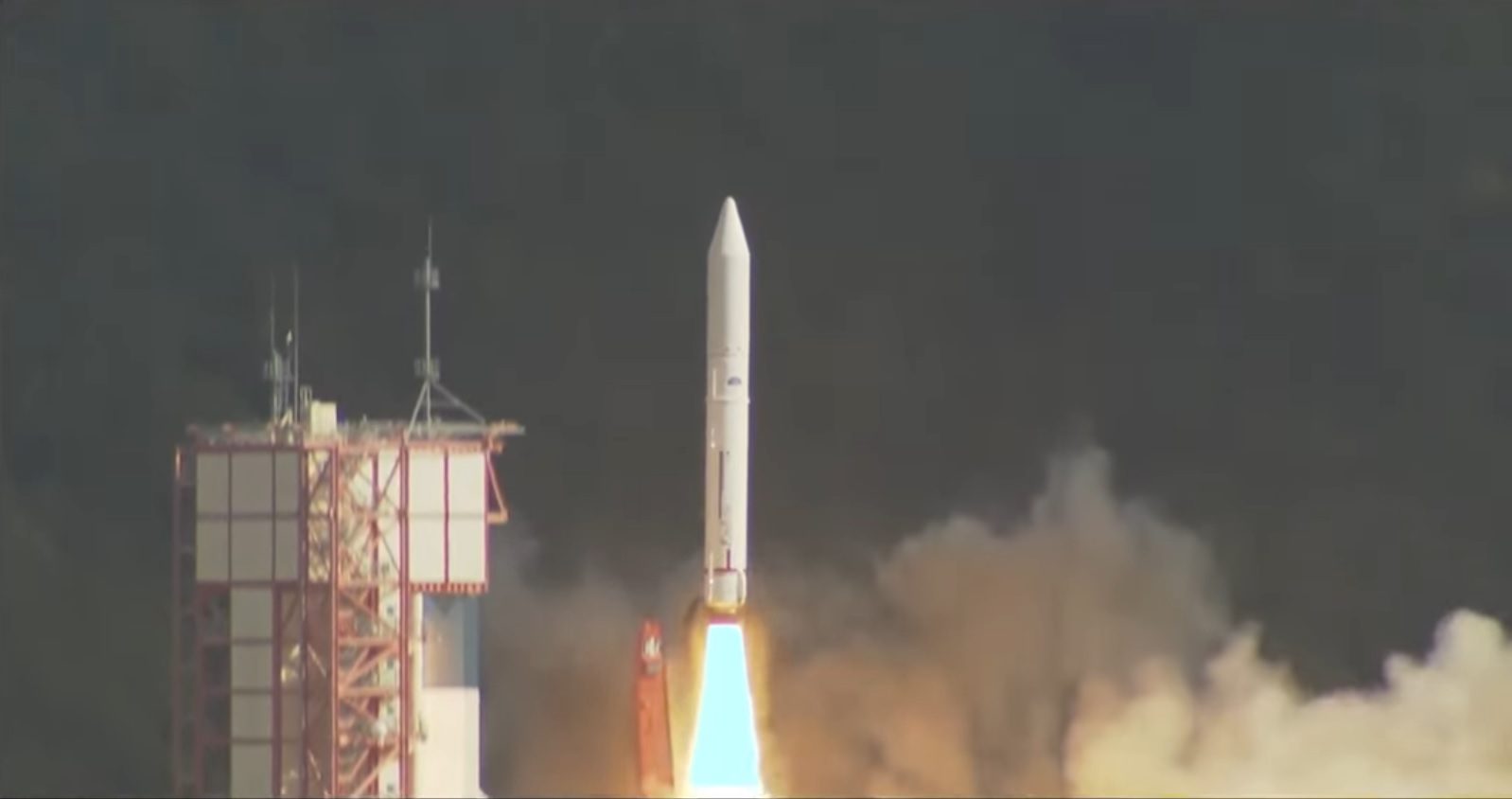A Japanese enhanced Epsilon rocket launched a multi-satellite mission on 9 November at 0055 GMT. The launch took place from the Uchinoura Space Center, Southern Japan, and carried nine small satellites in a JAXA-sponsored mission. The satellites were carried to a sun-synchronous orbit over 500 km, inclined at 97.6 degrees.

A screengrab from footage of the launch showing the rocket lifting-off from Japan. Courtesy of Japanese Aerospace Exploration Agency (JAXA) via YouTube
The primary payload was the RAISE-2 (RApid Innovative payload SatellitE No.2) small satellite which is hosting six payloads developed by various contributors. The spacecraft itself weighs 110 kg, and is the largest payload of the mission. Alongside RAISE-2 were four microsatellites and four CubeSats. Of the microsatellites on-board are: Debris Removal Unprecedented Micro Satellite (DRUMS), 62 kg, from Kawasalki Heavy Industries; HIBARI, 55 kg, from Tokyo Institute of Technology; TeikyoSat-4, also known as Ooruri, 52 kg, from Teikyo University; and Z-SAT, 46 kg, from Mitsubishi Heavy Industries.
In amongst the four CubeSats is the only foreign payload on-board, NanoDragon a AIS-equipped satellite built by the Vietnam National Satellite Center (VNSC). The three Japanese payloads were: ASTERISC, 3U-CubeSat, from Chiba Institute of Technology; KOSEN-1, 2U-CubeSat, by Kochi National College of Technology; and ARICA, 1U-CubeSat, from Aoyama Gakuin University.





